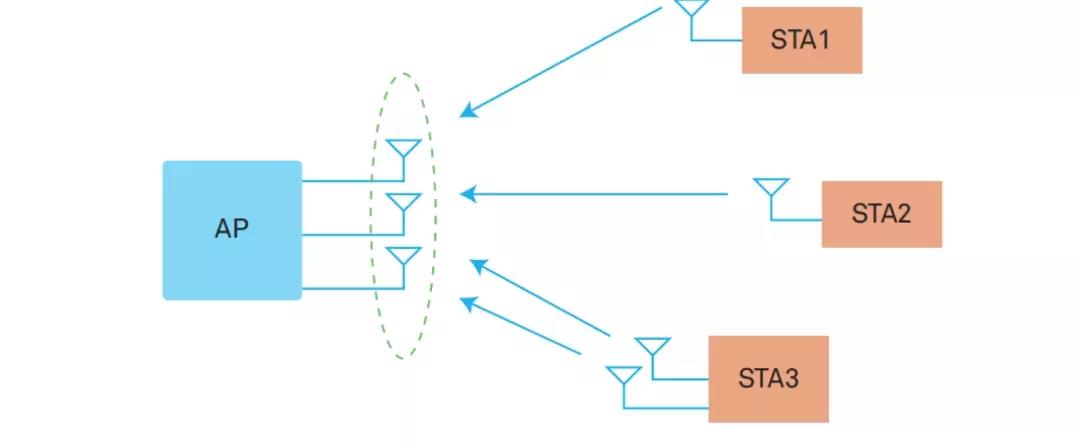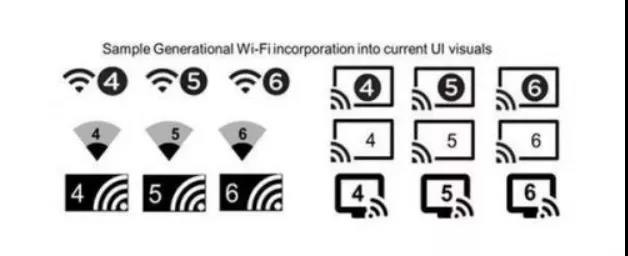With the advent of the 5G era, considering that 5G has a transmission rate comparable to wifi and a wider coverage and use convenience than wifi, there have been such things as "WiFi will be eliminated sooner or later", "WiFi will not survive 5G" The times, all kinds of remarks are endless. In a controversy, the Wi-Fi6 standard is late.
Not long ago, the Wi-Fi Alliance officially released the Wi-Fi 6 standard. Compared to the previous generation Wi-Fi standard, which is now widely used, Wi-Fi 6 will have faster bandwidth and more efficient maturity. On September 11, Apple released three iPhone 11 series models, mentioned in the wireless connection section of the technical parameters, all iPhone 11 series models support 802.11 a / b / g / n / ac / ax. Can WiFi6 bring new breakthroughs in technology application to defend itself from being eroded by 5G? Before talking about this issue, we might as well make a preliminary understanding of Wi-Fi6.
Wifi development history and WiFi6 features

The 20-year history of Wi-Fi technology is actually the process of people's constant pursuit of high transmission rates. As can be seen from the above figure, Wi-Fi will undergo a technological change almost every 4-5 years, and the main purpose of the change is to increase the transmission rate.
802.11 ax, in October 2018, the Wi-Fi Alliance renamed the Wi-Fi standard to better promote Wi-Fi technology, reference communication technology naming, where 802.11 ax was named Wi-Fi 6,11 ac was named For Wi-Fi 5, and so on. The Wi-Fi Alliance plans to certify Wi-Fi 6 products in 2019, so it was seen as a Wi-Fi 6 year in 2019. The Wi-Fi 6 single-space stream has a maximum rate of 600 Mbps at a bandwidth of 80 MHz. At the same time, Wi-Fi 6 pays more attention to the improvement of user experience.
802.11b — WiFi 1 (1999)
802.11a — WiFi 2 (1999)
802.11g — WiFi 3 (2003)
802.11n — WiFi 4 (2009)
802.11ac — WiFi 5(2014)
To put it simply, the previous WiFi naming was complicated and cumbersome, and now the naming is easy to understand. The biggest impact on our consumers is that we only need to know when we buy routers in the future. The bigger the number behind WiFi, the more advanced the technology is.
It is understood that the theoretical transmission speed of the latest generation of WiFi6 (802.11ax) has reached a transmission speed of 1.2GB / s. With the advent of WiFi6, it will cover more diverse applications, such as Internet of Things, cars, and 4K video transmission.

WiFi 6 technology breakthrough point
1. Full version of MU-MIMO technology
MIMO (Multiple Input Multiple Output) technology originated from Wi-Fi and was used in 802.11 n, and later used in 802.11 ac and LTE. MU-MIMO (short for Multi-User Multiple-Input Multiple-Output) refers to multi-user multi-input and multi-output.
MU-MIMO technology was first used in the 802.11 ac wave2 phase of Wi-Fi 5, but only supports the AP-to-terminal downlink transmission process, and its AP node can simultaneously send data packets to multiple MU-MIMO-capable clients. A problem that a wireless AP can only communicate with one terminal at a time. Wi-Fi 6 maintains this technology and is further enhanced with support for Uplink MU-MIMO in Wi-Fi 6, and supports up to 8x8 antennas, ie up to eight 1x1 users for concurrent uplink or downlink.

2. OFDMA technology
802.11 ax introduces a more efficient data transmission mode called OFDMA (because 802.11 ax supports uplink and downlink multi-user mode, so it can also be called MU-OFDMA), which should be regarded as 11ax true black technology.
Simply put, OFDMA redesigns the frame structure into several resource units (RUs) to serve multiple users. Multi-user multiplexed channel resources are implemented by assigning subcarriers to different users and adding multiple access in the OFDM system.
To date, it has been adopted by many wireless technologies, such as 3GPP LTE. In addition, the 802.11 ax standard also emulates LTE, and the smallest subchannel is referred to as a “Resource Unit (RU), and each RU includes at least 26 subcarriers, and the user is distinguished according to the time-frequency resource block RU. We first divide the resources of the entire channel into small fixed-size time-frequency resource blocks RU. In this mode, the user's data is carried on each RU, so from the perspective of the total time-frequency resources, there may be multiple users transmitting simultaneously on each time slice.
I used the truck to describe the OFDMA technology. In the original OFDM technology (the solution used in 11n/ac), it was shipped on order. No matter how much the goods are, you can send a single car and the idling rate will be very high. And OFDMA technology will aggregate multiple orders together. Let the truck be loaded as much as possible. This makes transportation efficiency much higher.

3. The difference and connection between OFDMA and MU-MIMO technology
OFDMA: Suitable for parallel transmission of small data packets, improving channel utilization and transmission efficiency. Its state is stable and it is not easily affected by the terminal.
MU-MIMO: Suitable for parallel transmission of large data packets, improving the utilization of multi-space streams and system capacity. Improve the effective bandwidth of a single user, but the operating state is not stable enough, it is easy to be affected by the terminal.
Both OFDMA and MU-MIMO are key technologies of Wi-Fi 6, providing multi-channel concurrency technology in frequency space and physical space, which greatly improves the overall performance and speed of the network and fully optimizes the user experience.
5G Vs WiFi6
In 2019, carrier-based mobile connections (LTE and 5G cellular networks) and unlicensed wireless networks (WiFi6, or 802.11ax) will move closer together in two main areas: radio signal coding and resource scheduling.
Both wireless systems use the same method to compress more users and data into the frequencies they use, allowing each base station or wireless access point to communicate with more devices simultaneously. Although technically similar, there are still many differences between carrier-based wireless systems and unlicensed wireless systems, such as cost, infrastructure placement, and the level of management control they provide to enterprise network operators.
In an enterprise environment, WiFi6 and 5G compete and complement each other due to differences in location, application, and device type. Here are a few examples of competing with each other:
■ Enterprises can purchase 5G small cellular devices (small cellular towers) and deploy them internally, providing 5G coverage for employees and slowly replacing WiFi with 5G.
■ Due to the continuous development of the WiFi standard, enterprises must upgrade their wireless Internet devices every 3-5 years. With 5G, these costs can be outsourced to service providers. Service providers will be responsible for regularly upgrading their wireless infrastructure.
In some use cases, 5G can complement WiFi6 such as:
■ In the Enhanced Mobile Broadband (eMBB) use case, a client device (CPE) can connect to a 5G network for Internet connectivity and can provide connectivity services locally over WiFi6.
■ 5G can complement the use of WiFi6 in residential fixed wireless (such as the 5G family service recently launched by Verizon). With 5G, service providers can reduce the cost of their scheduling operations and enable customers to activate their Internet connection services through self-service mechanisms.
■ Even in the enterprise, WiFi has higher penetration through WiFi-enabled laptops and mobile devices. While it's easier to remove WiFi from your mobile device and fully convert it to 5G, it's not easy to remove WiFi from your laptop. In addition, the introduction of WiFi6 in the enterprise is much cheaper than the 5G network. The time for the company to launch WiFi6 is also shorter than that of 5G.
In addition to the enterprise, in the future, WiFi6 and 5G will have changes in roles. The two are quietly changing the Internet of Things due to their high speed and high bandwidth. With 5G and WiFi6 coming out in 2019, IoT devices are designed to send more information and consume less energy. These technologies keep the device online or connected. Various types of devices may also begin to use the SIM card or eSIM card to enable cellular functionality, which will change the current trend of WiFi devices.
Compared to WiFi6, 5G technology also has its own unique advantages. For enterprise IT, 5G will be a revolutionary technology in areas where WiFi is not ideal. For example, if there are hundreds or even thousands of IoT devices that require wireless connectivity, in a company owned by the company, WiFi6 will It is a mandatory wireless technology for connecting IoT devices. When the Internet of Things moves to an area outside the corporate building, sensors can still use 5G as a wireless transmission mode to get connections with sufficient speed and reliability. 5G and WiFi6 have made IoT devices "live" and have changed the way we use IoT devices.
Conclusion
5G is not likely to replace WiFi. On the contrary, WiFi will continue to evolve and upgrade through 5G technology. For a long time in the future, 5G will coexist with WiFi6 and complement each other, and both in industrial production, Internet of Things, and intelligence. Driving and many other fields have great potential for application and imagination, helping new industries to break new productivity.





